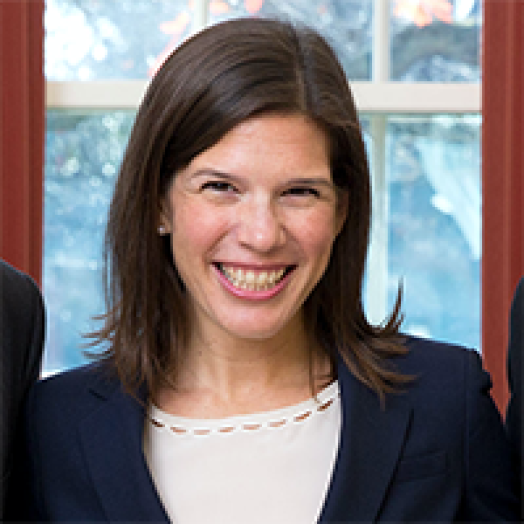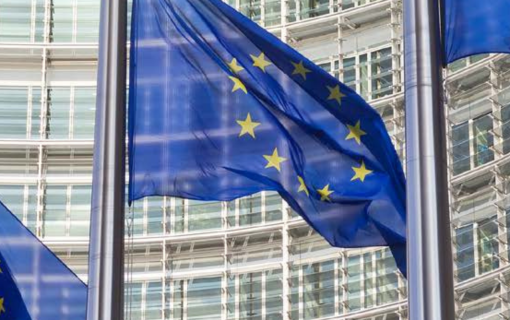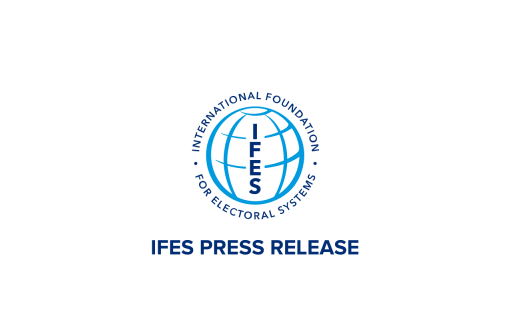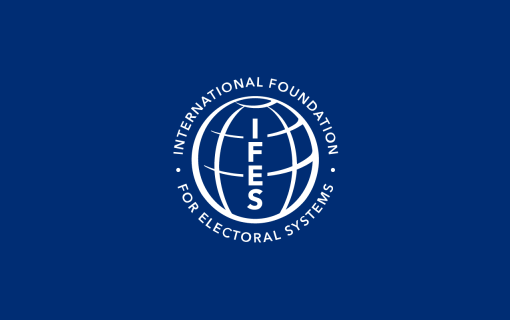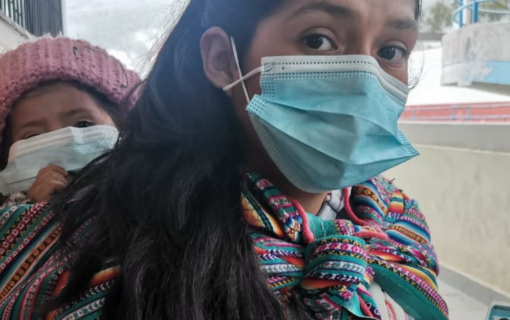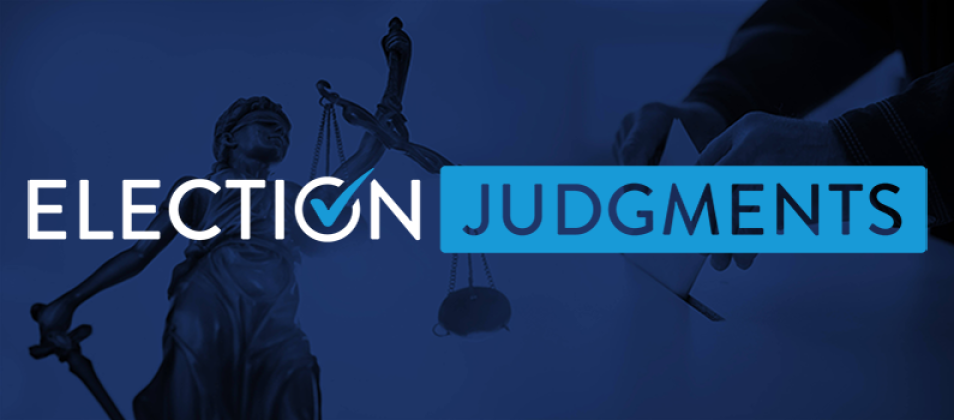
Elections on Trial: Lessons on Enforcing Gender Equality Protection
Original article with citations was published by the Comparative Jurist on Jan. 18, 2022.
Introduction
For true democracy to exist, all citizens must have equal access to elections. The International Convention on Civil and Political Rights (ICCPR), to which 173 countries are States Parties, makes clear that this includes equal access for women and men. The Convention on the Elimination of All Forms of Discrimination against Women (CEDAW) explicitly promotes women’s political participation by directing state parties to take action to ensure women’s equal participation.
Although 187 of 194 UN Member States ratified CEDAW and “the principle of equality of women and men has been affirmed in the constitutions and laws of most countries,” women remain woefully underrepresented in political leadership. As of 2021, women represent 5.9 percent of elected heads of state and the global average for women in parliament is 25.5 percent. Clearly, legal frameworks are necessary to promote gender equality and women’s political participation but insufficient to ensure women’s equal participation in elected office.
Countries have taken a variety of executive and legislative approaches to address the persistent challenges of gender equality in politics. A number of these approaches have led to legal challenges, amplifying the role of courts in interpreting and upholding the implementation of these provisions. In this paper, International Foundation for Electoral Systems (IFES) offers an initial analysis of select judgments on gender in election decisions based on cases included in Election Judgments, a database for national election judgments from around the world. Among these cases, the primary theme identified is the issue of affirmative actions—corrective, compensatory, and promotional measures, including gender quotas, taken by states to increase the representation of women in politics. While quotas have resulted in more women being elected to political office, as the data above indicates, they have been insufficient to achieve gender equality.
Quotas on Trial: Constitutionality and Implementation
Even though the constitutions of many countries guarantee gender equality, and those same countries have made international commitments to the principle of women’s equal political participation, courts have had to grapple with questions over the constitutionality of gender quotas. While in Spain the Constitutional Court upheld the constitutionality of the quotas after their introduction in 2007, concluding that they serve a legitimate purpose of ensuring equal participation, in France the Constitutional Council overturned an electoral law that created an obligation for each electoral list for the Corsican Assembly to ensure the equality of women and men. The Council held that it was unconstitutional to require gender parity under the Electoral Code because “citizenship confers the right to vote and stand for election on identical terms for all who have not been excluded on grounds of age, incapacity or nationality . . . . and no distinctions may be made between voters and candidates on grounds of gender.” It was not until the adoption of constitutional amendments and a new electoral law the following year that quotas were put in place. Both France and Spain saw increases in women’s representation in elected office following the introduction of quotas.
Courts and Election Management Bodies (EMBs) have also been called on to enforce the implementation of quotas under a variety of circumstances, resulting in equally varied results. In Indonesia, for example, a political party challenged a ruling of the EMB, which disqualified their candidate lists in two electoral districts for not meeting the thirty percent gender quota. However, by utilizing both their discretion and administrative flexibility, the Bawaslu, the independent General Election Supervisory Agency, allowed the party to “cure” both lists, simultaneously enforcing the gender quota and ensuring efficient election administration. In 2019 the Supreme Court of Argentina took the opposite tack, upholding the letter of the law but perhaps not the spirit. There the court considered a case in which a male candidate died and was replaced by the next male candidate on the list. The Court rejected the petitioners’ argument that the next candidate, a woman, should have been substituted for the deceased candidate to fulfill the Constitutional goal of providing for the representation of women. Instead, the Court determined that the substitution candidate should be the next person available on the list of the same gender as the deceased but specified that the list must be reordered to maintain the same gender alternation required under the electoral law.
Gender quotas were blatantly weaponized in a recent case in Samoa when the country’s ten percent gender quota, designed to increase women’s parliamentary representation, was used to block the instatement of the country’s first woman prime minister. When the April 2021 parliamentary elections resulted in a razor-thin defeat of the ruling party, the sitting prime minister sparked a political crisis by appointing another woman MP from his party to deadlock the election, on the grounds that the five women MPs out of fifty-one total elected did not meet the ten percent gender quota. The Supreme Court of Samoa rejected the formula for calculating the ten percent minimum advanced by the ruling party and cleared the way, after additional appeals, for the duly-elected prime minister Fiame Naomi Mata’afa to finally take office and make history in July 2021.
Another dramatic decision regarding gender quotas was rendered in Kenya in April 2020 when the Chief Justice of the High Court determined that he must “advise the President to dissolve Parliament” for its repeated failure to implement a gender quota, known as the “two-thirds rule.”Parliament was required to enact implementing legislation to operationalize the Constitutional mandate, a task they failed to do after more than a decade of delay and despite multiple court orders. Finally, the Chief Justice concluded, “[p]arliament has not enacted the legislation required to implement the two-thirds gender rule which. . . is clear testimony of Parliament’s lackadaisical attitude and conduct in this matter. Consequently, it is my constitutional duty to advise Your Excellency to dissolve Parliament under Article 261(7) of the Constitution.” This guidance kicked off what some called a potential constitutional crisis in the country. As one Kenyan legal scholar noted, “refusal to dissolve parliament . . . will open the president to accusations of breach of the 2010 constitution, and complicity in parliament’s failure to enact the required law . . . .” To date, none of these dire predictions have come to pass, even though the President did not dissolve the congress. Instead, the High Court suspended any move to do so, pending a full hearing.
As this sample of cases from every region of the world makes clear, courts have a significant role in determining whether quotas, and other more progressive forms of affirmative action, are a viable mechanism for advancing gender equality. Thus, the next section provides a case study in what is possible when electoral bodies commit themselves to operationalizing the principles of gender equality enshrined in law.
From Gender Quotas to Gender Parity: Mexico Leading the Way
Arguably, no country in the world has come closer to realizing gender parity in elected positions than Mexico. By 2018, women had achieved half the seats in Mexico’s Congress and went on to lead a 2019 constitutional reform to require “parity in everything,” which was adopted unanimously by the Congress. The June 2021 elections, the largest in the country’s history with over twenty thousand national, state, and municipal offices on the ballot, were the first test of the requirement for gender parity for all candidates for elected office and for top executive and judicial positions. As journalists and commentators from around the world noted, the “June 6 elections shattered records for the number of female candidates,” with women making up more than half of all candidates. Voters elected six women governors out of the fifteen governor positions open. Prior to the June elections, “only nine women had been governors in Mexico since women got the vote in 1953.”
This transformation did not happen overnight, nor was it inevitable. In tandem with efforts by activists and legislators, Mexico’s electoral bodies, which include the Instituto Nacional Electoral (INE), an organization that determines the electoral rules and organizes the presidential and congressional elections, and the Tribunal Electoral del Poder Judicial de la Federación (TEPJF or Tribunal), a specialized court charged with resolving electoral disputes and certifying the validity of elections, began putting in place specific criteria to ensure the gender quotas were enforceable and to “achieve the objective of having a large number of women holding public office.” The Tribunal continues to take an active role in ensuring that Mexico realizes the parity requirements in the Constitution and put in place by the Congress. In advance of the June 2021 elections, for example, the INE issued an order requiring that each political party nominate women candidates in at least seven of the fifteen gubernatorial races. When the president of the Senate challenged that order, the TEPJF upheld the INE’s decision, paving the way for the historic results noted above.
Conclusion—What do these cases tell us about gender equality?
From the adoption of CEDAW in 1979 to the Generation Equality Forums in Mexico City and Paris in 2021, the international community has heralded, time and again, its commitment to the principles of gender equality. Yet, as the cases discussed in this paper demonstrate, this collective commitment often breaks down in the face of national implementation. To take women’s representation in national parliaments as one (imperfect) proxy, at just 25.5 percent, we are barely halfway there.
That questions related to gender quotas and other affirmative actions designed to operationalize gender equality dominate the gender-related cases in Elections Judgments database is telling in itself. At a minimum, we can see that quotas and affirmative actions: (1) are the source of relatively frequent litigation; (2) have been used to varying degrees of success to advance gender equality; and (3) are most powerful when accompanied by an institutional commitment on the part of the courts to enforce both the spirit and the letter of the laws. The cases discussed in this paper also raise important questions for the field. For example, what happens when the courts are the primary (or the only) voice attempting to uphold the rule of law on cases of gender equality and beyond? As we saw in Kenya, when a court issues an order to the President to dissolve the Parliament and the President does not act, the reputations of all three bodies are damaged. And even in less extreme cases, the cause of gender equality and women’s empowerment is one that must be recognized and enforced at every level of society–from the household to the workplace to the community to the legislature–for all people to realize their right to live “free and equal in dignity and rights.” Without that societal and institutional commitment, victories in court, no matter how well-argued and well deserved, will be pyrrhic.
Published on February 9, 2022.




